Interventional Radiology – Independent Program
The Interventional Radiology – Independent Residency program is fully accredited by the Accreditation Council for Graduate Medical Education (ACGME). It provides a well-rounded educational experience of extensive training in the interpretation of vascular imaging and the clinical management of patients treated by interventional radiologists. Physicians completing the program will be eligible for the IR/DR dual certificate and will be well positioned to excel in academic or private practice careers.
Mission
The mission of the Interventional Radiology – Independent Residency program is to prepare and inspire the next generation of clinicians, researchers, educators, and leaders in radiology, interventional radiology and medicine, and to instill in each trainee the highest ideals of patient advocacy, technical and clinical excellence, professionalism and integrity. We strive to graduate trainees who will treat diverse patient populations across the country in both academic institutions and private practice in keeping with the institutional mission.
Program Aims
- Develop foundational skills for procedural excellence through graduated autonomy and individualized mentoring by highly engaged and diverse Interventional Radiology faculty
- Develop foundational skills for longitudinal patient care excellence through fostering the ideals of empathy, compassion, communication, and duty to patients
- Develop the requisite knowledge base to practice state-of-the-art patient care through a comprehensive curriculum led by world-class faculty
- Provide clinical training experiences in diverse healthcare settings, including underserved and high-complexity tertiary care populations in nationally recognized institutions
- Educate providers of outstanding care who will enter diverse clinical practice settings such as academic medicine and private practice
- Mentor the next generation of leaders in research, quality, and education
- Foster the development of leadership skills through mentoring and progressive autonomy
- Instill core values of intellectual vibrancy, inspiration, innovation, iteration, integrity and impact which are foundational principles of the UT Southwestern Radiology department
Program Highlights
- Training at one of the most diverse medical campuses in the nation:
- Parkland Memorial Hospital: Combining a storied 120-year history with a $1.3 billion newly constructed 862-bed county hospital to serve the diverse population of Dallas County.
- William P. Clements University Hospital: Newly constructed 460-bed hospital with a 300-bed expansion to be completed by 2020. Clements University Hospital is the center of advanced specialty patient care and advanced imaging in North Texas and surrounding states.
- Children's Medical Center Dallas: Free-standing 487-bed children's hospital and only academic healthcare system serving North Texas and adjoining states.
- Participation in multidisciplinary conferences with radiology faculty and other clinical services.
- Specialized training for a future career in academic or private radiology practice by participating in radiology research initiatives, developing clinical educator skills, and developing quality improvement expertise.
- Dedicated interventional radiology clinic.
Training Curriculum
Rotation schedules are structured on a four-week block basis, providing 13 rotations per year with significant exposure to interventional radiology.
| Curriculum | |
|---|---|
| YEAR | ROTATIONS |
| PGY-5 (IR1) | 2 clinic and vascular imaging rotations, 1 ICU, and 10 IR rotations |
| PGY-6 (IR2) | 11 IR rotations and 2 IR related elective rotations |
Resources
- The radiology education office and UT Southwestern medical library provide a wide selection of electronic educational material, videotaped lectures, and electronic textbooks.
- Residents are provided access to online resources such as eAnatomy, RADPrimer, and STATdx.
- Additional annual educational stipend.
Call Duty
IR Residents begin taking call shifts at the beginning of the their training and continue through the remainder of their residency.
VIR Faculty

Ali Baiomy, M.D.
Assistant Professor
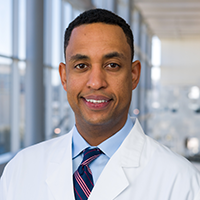
Jamaal Benjamin, M.D., Ph.D.
Assistant Professor
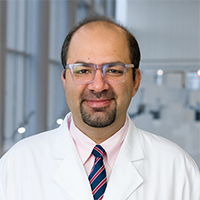
Moaz Choudhary, M.D.
Assistant Professor
Associate Program Director, Integrated Interventional Radiology Residency and Independent Interventional Radiology Residency
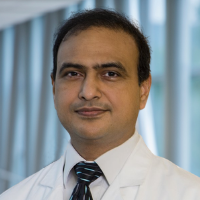
Girish Kumar, M.D.
Assistant Professor
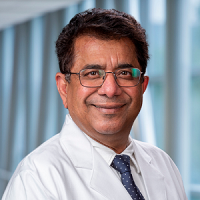
Manoj Kathuria, M.D.
Associate Professor
Program Director, Integrated Interventional Radiology Residency and Independent Interventional Radiology Residency
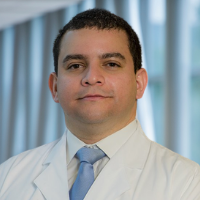
Daniel Lamus, M.D.
Assistant Professor
Associate Chief Radiology Officer, Parkland Memorial Hospital

Auh Whan Park, M.D.
Professor
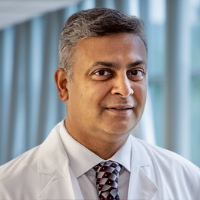
Anil Pillai, M.D.
Associate Professor
Division Chief
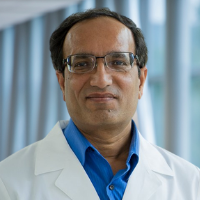
Jayesh Soni, M.D.
Assistant Professor
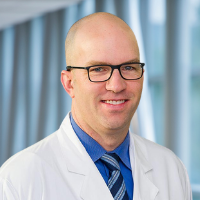
Seth Toomay, M.D.
Associate Professor
Associate Vice President & Health System Chief Medical Officer
Facilities and Equipment
Parkland Memorial Hospital:
- Four angiography suites - Two single-plane Philips, one biplane Philips, and one biplane Toshiba
- Two Siemens CT fluoroscopy-enabled scanners
- Dedicated ultrasound equipment and procedure room
- Dedicated PA and NP support staff
- Dedicated IR clinic with PA and nursing support staff
Clements University Hospital:
- Four Philips angiography suites - Three single-plane and one biplane
- Two Philips CT fluoroscopy-enabled procedure scanners
- Dedicated ultrasound equipment and procedure room
- Dedicated PA and NP hospital support staff
- Dedicated IR clinic with MA support
Children's Medical Center Dallas:
- Two Toshiba IR suites - one biplane and one single-plane
- Dedicated US equipment in each suite
- One Siemens CT fluoroscopy-enabled scanner
Additional clinical imaging facilities:
- Four dual-energy CT scanners, including a Philips IQON spectral CT scanner
- One 320-row CT scanner
- Three 256-row CT scanners
- Twelve 64-row CT scanners
- Seven 3T magnets
- Seven 1.5T magnets
- Two 3T and one 7T research magnets
- Fourteen Phillips iu22 (including elastography software) ultrasound units
- Nineteen EPIQ7 ultrasound units
Conferences
Radiology teaching conferences are held daily at multiple sites throughout the year and include both didactic lectures and case-based presentations.
- Dedicated IR didactic and case-based curriculum starting in the PGY5 year focused on core concepts of the field and tailored to the IR certifying exam
- Supplemental didactic curriculum focused on the business and administration aspects of a private radiology practice
Radiology Grand Rounds are held monthly with prestigious visiting and local professors, offering the opportunity to meet and learn from leading national authorities on a wide variety of topics.
Multidisciplinary clinical conferences are offered in combination with medicine, surgery, pathology, and the various clinical subspecialties.
UT Southwestern Department of Radiation Oncology, Division of Medical Physics and Engineering provides formal education in the basic sciences of radiation biology and radiological physics in preparation for the physics portion of the American Board of Radiology examination.
Research Opportunities
Intellectual vibrancy and technological innovation are core values of the Department, which are developed through research and collaborative efforts of the clinical and research faculty.
Residents are required to engage in scholarly activity as part of their training in an ACGME-accredited program. Results must be published or presented at institutional, local, regional, or national meetings. Projects may include:
- Laboratory research
- Clinical research
- Analysis of disease processes, imaging techniques, or practice management
Salaries and Benefits
Hospital stipends are set annually and are competitive nationally with those of other teaching programs. The amount, shown in the chart below, depends on the year of residency training.
Low-cost hospitalization and dental insurance is available to contracted house staff, as well as a group life insurance plan.
Medical malpractice insurance is provided for Radiology house staff by the Department through the University of Texas System group plan.
Each resident receives 25 days of PTO annually. PTO does not roll over from year to year.
Site-based meal stipends are provided based on call shifts.
Subsidized resident parking is available.
| Salary | |
|---|---|
| PGY 1 | $66,918.00 |
| PGY 2 | $69,431.00 |
| PGY 3 | $72,679.00 |
| PGY 4 | $76,493.00 |
| PGY 5 | $80,521.00 |
| PGY 6 | $83,617.00 |
| PGY 7 | $88,055.00 |
| PGY 8 | $92,664.00 |
Parkland Contract
Application Process
The IR Independent program offers two residency positions annually.
Radiology residency applications should be submitted through the Electronic Residency Application Service (ERAS).
It is strongly recommended that you complete your application by November 15. In addition to the ERAS application, applicants are must include:
- Brief personal statement
- Curriculum vitae
- Medical school transcript
- Dean's letter
- Three letters of recommendation from physicians who have knowledge of your clinical experience
The Department acknowledges every application submitted. Following completion of the application, the Residency Selection Committee evaluates and selects candidates to interview. Interviews are conducted each year from November through January.
Applications are evaluated for both personal and professional qualities with the goal of a diverse program filled with qualified candidates.
All positions begin July 1 following successful completion of a preliminary year of training.
All positions are filled through the Match unless special circumstances apply. Our National Resident Matching Program (NRMP) program code is 2835420C0 for positions to commence the July after completion of a preliminary year of training.
Residency Interviews
Residency interviews are conducted on weekdays and include:
- Pre-interview virtual social hour
- 20-minute interviews with three or four faculty members and/or residents
- Virtual department tours
Passage of Medical Licensing Examinations Policy
International Medical Graduates
For questions regarding International Medical Graduates, please visit our residency page.
